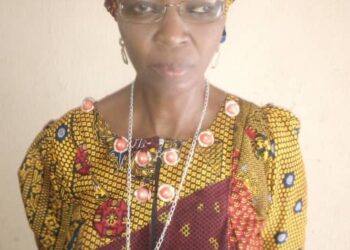The first military administrator of Nasarawa state when it was carved out from the old Plateau state on October 1, 1996, Wing Commander Abdullahi Ibrahim, had to start literally from the scratch to build governance structure in Lafia, capital of the new Nasarawa state. Lafia at the time was just a local government headquarters and noted more as a trading post.
Although the administrator was given a take-off grant by the federal government, he faced teething problems associated with anything that has to start from the scratch. To his credit, he started the construction of the Government House on Shendam Road, etc. This was completed by his successor, Alhaji Abdullahi Adamu, who was the first democratically elected governor of Nasarawa state (on return of civilian rule in 1999). He was sworn in on May 29, 1999.
Adamu continued with putting in place governance structures and also embarked on rural infrastructure development. His stand out achievement was establishment of a number of tertiary institutions like the Nasarawa Polytechnic (now Mustapha Agwai II Polytechnic), College of Health Technology, Keffi and Nasarawa State University, Keffi (NSUK), all of which are providing the state with some of its manpower needs.
One grouse critics had with Adamu is non completion of the Farin Ruwa hydro electric project which would have provided the state with sufficient energy to end its epileptic power problems. It was about 60 percent completed when his administration exited on May 29, 2007 and his successor did not deem it a priority and so it was abandoned.
His successor, Alhaji Aliyu Akwe Doma, focussed primarily on agriculture with his Bakodoshi programme that saw to the export of especially Nasarawa yams overseas. Apparently, he could have done more in his second tenure but he did not have this chance as he was defeated by Alhaji Tanko Al-Makura of the CPC which transmuted to the APC.
Al-Makura changed the face of Lafia by way of physical development, giving it a semblance of a state capital. It was no longer a glorified state capital or a one-street capital as it used to be derisively called. He opened up the capital city with standard access roads. Critics allege that most of the contracts awarded by his administration to a single company, were over inflated. His construction of a cargo airport in Kwandere, Lafia, was faulted by critics. He also sold off some of the state’s assets in Lagos, Kaduna, etc., apparently, to raise funds for development projects.
Governor Abdullahi Sule on assuming office on May 29, 2019, made it a point of duty to complete uncompleted projects started by his predecessor. He completed the Cargo airport which was taken over by the federal government last year; although it is used more by private jets than commercial aircraft. Being an industrialist from the private sector, his focus is on industrialisation.
And he has been able to attract some big time private sector players to establish agro-based companies in Nasarawa state.
A sticking point here is land compensation. Following discovery of oil deposits in the Ebeno area of Obi local government area of the state, former President Muhammadu Buhari performed its spud turning ceremony last year. Although Sule’s industrialisation drive has better prospects of poverty reduction due to its multiplier effects, it appears his efforts are yet to be fully appreciated by the masses.
To some extent, it can be said that the aspiration of Nasarawa state’s founding fathers had been met, which was to give a voice to the people of the then Lower Plateau who felt marginalised in the old Plateau state. Nasarawa state now has its share of federal institutions, among them federal university (with a federal teaching hospital underway), federal medical centre, branch of the Central Bank of Nigeria, and so on and so forth. It also has its share of statutory federal appointments.
Although each administration since its creation in 1996 contributed its quota to the Nasarawa project, laying its own bricks on it, the state is still not at par with its contemporaries. It still lags behind in terms of physical development when compared to states that were created at the same time, namely, Ekiti, Bayelsa, Ebonyi, Gombe.
A mult-ethnic, multi-religious state, Nasarawa state has never witnessed religious crisis. But it had been rocked by communal crises, chief among which was the one that happened in the Nasarawa/Toto axis that claimed the life of a female commissioner then in the run up to the 2003 general elections and also the one in the Awe/Azare area in which a traditional ruler was killed. There was also the infamous ‘Omatshe’ crisis during the Al-Makura administration in which many security personnel were killed.
Over the years, the reoccurring problem has been the farmers/herders clashes which the government has sought to curb through dialogue with stakeholders. However, the 2023 elections burst open primordial religious and tribal sentiments. The state is now deeply divided along these lines. The urgent task for anyone, eventually pronounced by the Appeal Court as winner of the March 18, 2023 governorship election, is to heal the deep wounds festered by the election, through serious reconciliation efforts to unite the people.
Ngozi Ikeano writes via [email protected] 08034077519




